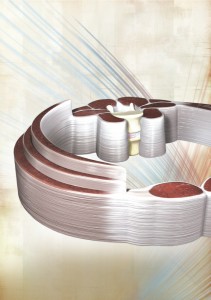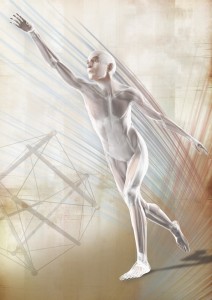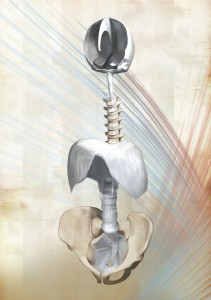Rolfing: Posture Patterns and The Effort of Being Upright
What Is It?
Rolfing is a method of Bodywork designed to bring the body back into alignment in Gravity. The basic premise is that we are designed to be upright, at ease, flexible and supported in the field of gravity, that this is our natural state. This natural state gets disrupted by injury, repetitive movement patterns, even old emotional trauma as the body attempts to compensate for the strain caused by these events. As the body takes on the strain, the Connective Tissue, or fascia, thickens and toughens to manage being out of alignment. Thus, the fascia is the place where all these old patterns lodge, causing reduced mobility, and increased effort and pain.
Connective Tissue is the stuff that makes up the ligaments and tendons. It also includes the fine filaments and membranes that surround all of the bones, organs, muscles and compartments of the body. This is also where the nerves and blood vessels travel through the body. It is like a single, really complex web of tissue, providing support and spacing for all of the other specialized organs of the body.
By dealing with the holding patterns in this tissue, caused by repetitive movements, holding or old injuries, Rolfing seeks to bring the body back towards its optimal function and position.
The body is often regarded as a machine, like the stiff articulated robot of Arnie Schwarzennegger’s Terminator. Instead we have the potential to move more like a fluid, mobile creature, sliding through space gracefully and efficiently.
Where Does It Come From?
Dr Ida P Rolf PhD, an American biochemist, first recognized the link between Connective Tissue and structure back in the 1930’s. She spent many years studying different disciplines, including Osteopathy, Reflexology and Yoga and indeed that research continued for the rest of her life as she continued to refine and develop her work.
She began working with people who had found no relief from their pain and postural problems and soon gained a reputation as someone who could solve seemingly intractable issues in the body. She began teaching her work in the 50’s and founded the Rolf Institute in 1971. Today, there are practitioners around the world, dedicated to continuing her research and working to help people lead pain free and ‘normal’ lives.
How Does It Work?
Practitioners of Rolfing delve into the Connective Tissue, easing the thickened and shortened tissue back into its normal position, thus allowing improved range of motion and posture to return. As the body finds a place of more ease, it becomes more natural to stay there. Most practitioners use slow, sometimes deep pressure to encourage a shift in the fascia.
Recognizing the role that the Nervous System has to play in reorganizing old patterns, educational strategies are used to help the client find a simpler, more efficient, often more sophisticated way of moving . This is a careful, organized strategy of dealing with the imbalances in the posture, and the far reaching effects of trauma and misalignment throughout the body. Rolfers work through a series of ten sessions. This process has been designed so that the body is able to develop a new awareness and adapt to change in a progressive way, helping to support long term change.
What happens in a Session of Rolfing?
First the Rolfer will take a history, and have a look at your structure. How do you stand and walk? What areas are out of alignment? Where do you feel discomfort, limitation or pain? Some may take photos, to assess your current posture and to see changes as they manifest throughout the series. Then they will have you lie on a table or sit, while they slowly feel for those limitations and begin to stretch and ease the tissue back to its correct position. Using different positions on the table, and a variety of hands on techniques and educational strategies, the practitioner will help you to discover where your optimal position and movement can be. You may be asked to move or stretch in particular directions, to find your limits, and to explore that specific holding pattern.
The sessions are focused on finding the best function and mobility for your particular structure. The work progresses from the superficial fascia to the deeper structures in the body, and from the ground up, gradually building a freer, easier, more supported body.
Why Ten Sessions?
Each of the sessions in Rolfing has a specific anatomical focus, gradually building a whole.
- Looking at the breath, the first session deals with the ribcage and the muscular apparatus involved with normal breathing, the diaphragm and the deeper muscles of the neck. This also begins working with the alignment of the pelvis, how it sits on the hip joints and legs, and the relationship to the spine.
- Support is the next issue. How do the feet and legs function in their role of reaching the ground, connecting to the earth, and moving you through space? Whether you have high arches or flat feet, the work is aimed at normalizing function, mobilizing the joints and tissues to allow free contact and movement on the ground. The knees and hips and the muscles that move them are also worked here.
- The lateral line of the body is the focus now. What is in front of the gravitational vertical through the body, and what is behind? How does the shoulder girdle relate to the torso, how too does the pelvic girdle match to the torso. Is there enough space between the ribs and the pelvis to allow the spine length at that critical lower back?
- Support again. How does weight reach the ground? From the arches, up the inside line of the leg to the pelvic floor, is your knee tracking in a straight line? Can you relax into your support? What is your way of walking? Do you tend more towards Charlie Chaplin, or John Cleese?
- The front of the body. Finding spaciousness and openness in the ribs and diaphragm, and delving into the deep structural and movement muscles, psoas and iliacus as they cross the front of the hip and affect that funny walk.
- The back. Often a long session, the terrirory here reaches all the way from the hamstrings and back of the knee, up to the upper spine. Looking for ease and relationship across the hip joint, as well as the specifics of spinal movement and structure.
- Putting the head on top. This is about the upper spine and its relationship to the head. How does the head balance on top of the cervical vertebrae? Is there normal range of motion? Can you reverse your car easily, for example? TMJ problems, headaches, balance and orientation are all considered here
- 9 and 10 These are the integrating sessions. Rolfing was termed Structural Integration by Dr Rolf, and a very important focus of this work is how it all fits together, how the whole body manages in gravity. Integration work is done in every session, but here it is the main event. Linking longer lines of connection through the whole structure, relating all of the parts to the whole. How walking comes from the whole body, the spine and head intimately involved as the flow of natural movement reaches right through the body.
Who Can It Help?
This is a method that can be applied at any age, and for many conditions. People come from all sorts of backgrounds and occupations to find an easier way to live in their bodies. From the professional dancer or sportsman to people with sedentary computer jobs, or those doing hard physical work. Many people come to deal with postural or pain issues, as a result of old injuries or trauma that have not been resolved. Neck pain, back pain, shoulders, knees and hips, are often symptomatic of an underlying misalignment. Something that happened years ago, that threw the body off centre, and it began bracing from there. This is the stuff Rolfers love to work with, that hidden or held place that is now having consequences through the whole person. This is the exciting part, where someone rediscovers a way of being in the world they thought was lost to them.
How Long Does It Last?
Rolfing aims for long lasting results, where the client takes on responsibility for their wellbeing and mobility. Where it is easier to be upright than to either hold yourself up, or collapse. CT is more like a plastic medium, rather than the elastic muscles, so it can be reformed at almost any age. There is an advanced series of sessions, designed to continue the process of finding the best alignment possible. Rolfers also commonly do tune up sessions on previous clients, helping with older long standing issues, or dealing with the ongoing effects of daily life. This can include injuries, or the painful effects of repetitive strain such as continuous work at the computer, or the heavy lifting done by the landscape gardener.
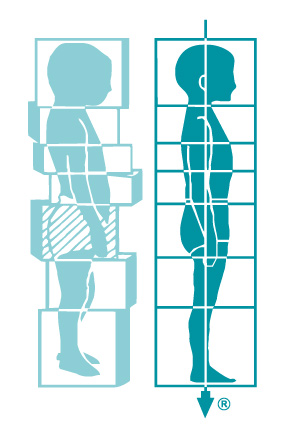

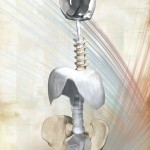 Previous Post
Previous Post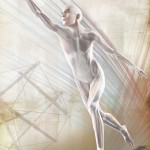 Next Post
Next Post